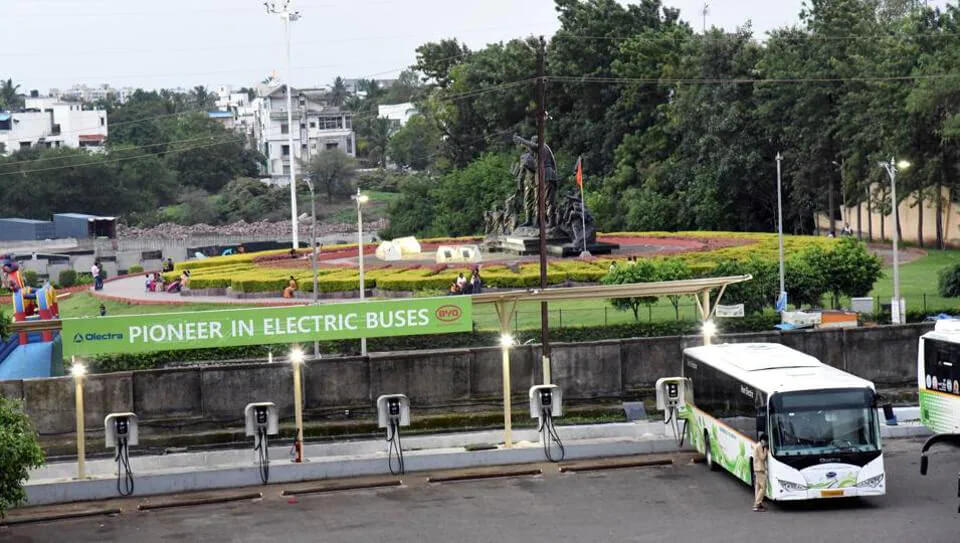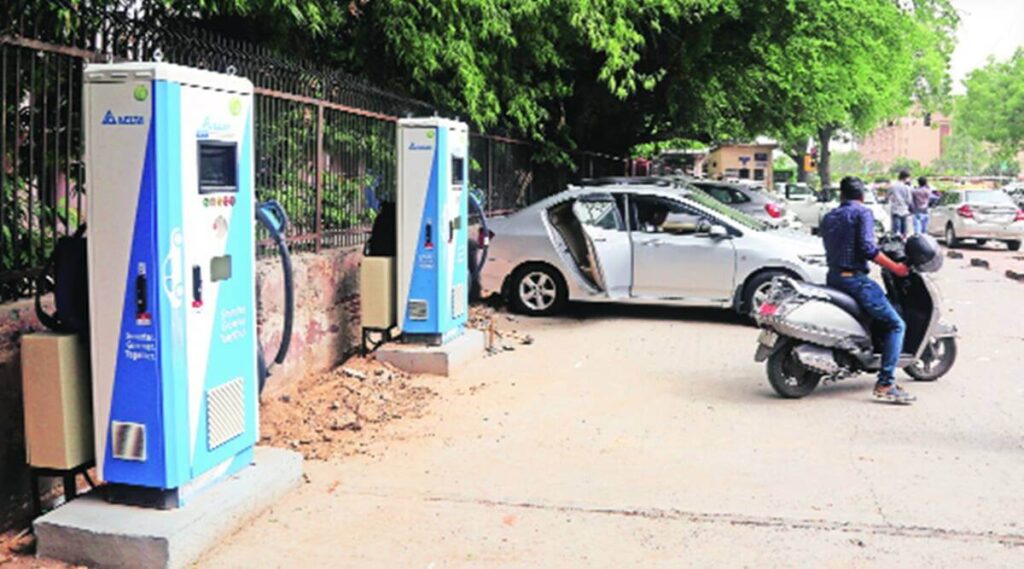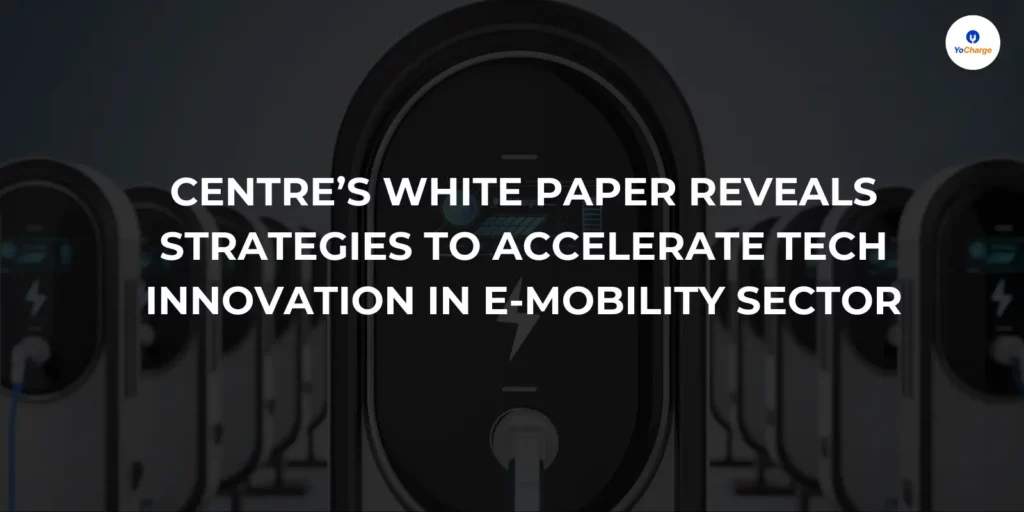
This white paper is a concise version of three white papers prepared by the Department of Science and Technology (DST) on EV batteries, Motors & Power Electronics, and EV Charging Infrastructure. The white paper assesses the technology gap areas, identifies potential solutions, and suggests an R&D roadmap to develop indigenous products/systems for battery, motor & power electronics, and EV Charging Infrastructure in India. The document has been prepared with extensive consultation from OEMs, the component industry, startups, DISCOMs, and other stakeholders involved in the entire EV ecosystem.
Summary of the White Paper on Catalyzing Tech Innovation in E-Mobility Sector
Section 1: India’s Electric Mobility Program: Evolution and Context
The section on India’s Electric Mobility Program delves into the evolution and context of the country’s journey towards sustainable development through electric vehicles (EVs). It emphasizes the significance of EVs as a sustainable alternative to fossil fuels within the road transportation sector, aligning with Prime Minister Narendra Modi’s commitment to mitigate climate change.
Despite the ambitious goal of achieving a 30% EV market share by 2030, only 6.3% of vehicles were electric in 2023, necessitating collaborative efforts from stakeholders.
Evolution of India’s Electric Mobility Program
- The Ministry of Heavy Industries initiated the promotion of hybrid and electric vehicles (EVs) in 2013, leading to the launch of the FAME India program in 2015.
- The program aimed to boost domestic manufacturing through Phased Manufacturing Programs (PMP) and Production Linked Incentive (PLI) Schemes for Advanced Automotive Technology (AAT) products, with a focus on EVs.
- Despite these initiatives, challenges persist in increasing the percentage of xEVs sold in India above the current level of about 6%.
Challenges and R&D Imperatives
- Hindrances to widespread EV adoption include high acquisition costs, battery technology limitations, inadequate charging infrastructure, raw material supply issues, and manufacturing competency constraints.
- The need for breakthrough interventions to establish a robust domestic manufacturing industry for EV components is crucial.
- R&D focus areas include designing and manufacturing EV components tailored to Indian conditions, scaling up promising technologies, developing charging infrastructure, and exploring alternate raw materials for sustainability.
Recommendations and Way Forward
- Emphasis on developing state-of-the-art facilities for technology scale-up, enhancing quality and reliability, and ensuring a sustainable circular economy through raw material manufacturing, recycling, and waste management.
- Prioritizing vehicle-level technologies like ADAS, Connected EVs leveraging 5G networks, and Hybrid Electric Vehicles (HEVs) to enhance energy economy and reduce emissions.
- Strengthening self-reliance in manufacturing EV-related electronic components to support the growth of the EV sector in India.
The section underscores the importance of collaborative efforts between government, industry, and research institutions to accelerate the adoption of EVs in India and achieve decarbonization goals effectively.
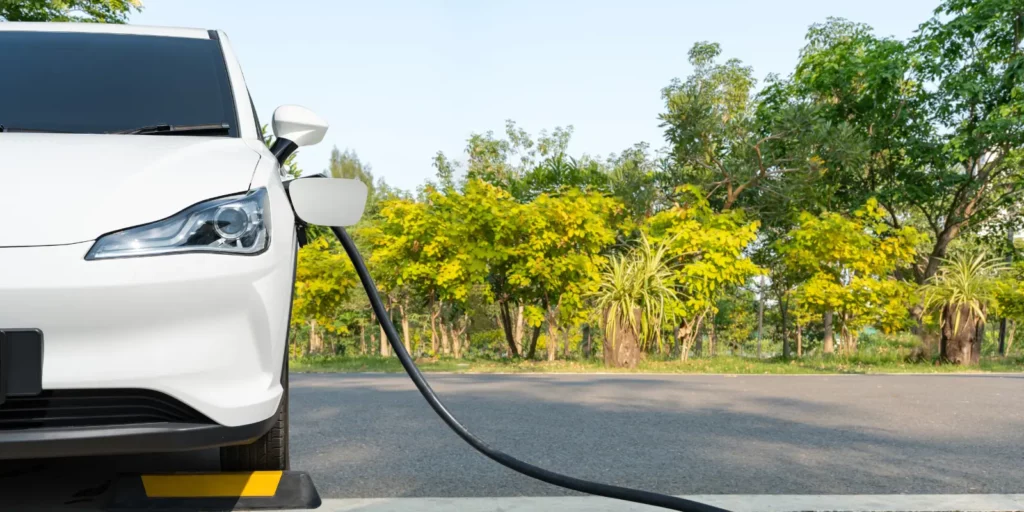
Section 2: Tropical EV Battery
The section on Tropical EV Battery within the white paper focuses on the critical aspects of electric vehicle (EV) batteries, particularly in the context of tropical conditions in India. Here is a detailed overview of this section:
Status and Challenges
- Battery Requirements: EV batteries need to exhibit high energy density, power density, fast charging capability, safety features, and durability while maintaining low costs.
- Tropical Conditions: The tropical climate in India poses challenges to battery life and safety, necessitating specific adaptations for battery technology.
- Market Dominance: The dominance of two- and three-wheeler applications in the Indian market requires tailored battery solutions due to different drive profiles compared to larger vehicles.
- Import Dependency: India currently relies on imported battery cells due to the absence of domestic manufacturing capabilities, leading to quality concerns and increased life-cycle costs.
EV Battery Technology Options and Assessment
- Cell Manufacturing: The lack of cell manufacturing capability in India highlights the need for indigenous production to ensure quality, cost-effectiveness, and safety.
- Scaling Up Technologies: Developing new cell technologies and scaling them up for commercial production requires time, cost, and systematic testing processes.
- Lithium-Ion Battery (LIB): LIB remains the primary choice for EVs, emphasizing the importance of critical components like cathode active material for optimal performance.
Recommendations and Way Forward
- Technology Adaptation: Tailoring battery technology to suit Indian conditions by addressing challenges related to temperature, humidity, and usage patterns.
- Quality Assurance: Establishing robust quality control measures to ensure safe and reliable battery performance in diverse operating environments.
- Indigenous Manufacturing: Encouraging the development of domestic manufacturing capabilities for battery cells to reduce dependency on imports and enhance sustainability.
- Research and Development: Investing in R&D efforts to innovate battery technologies, improve efficiency, enhance safety standards, and drive cost-effective solutions for EV batteries.
By focusing on indigenous manufacturing, technology adaptation, quality assurance, and continuous R&D initiatives, the country can overcome barriers and accelerate the adoption of electric vehicles towards a sustainable future.
Suggested Reads: Indian Standards for Electrotechnology in Mobility 2024
Section 3: Power Electronics, Machines, and Drives (PEMD)
The Power Electronics, Machines, and Drives (PEMD) section of the white paper highlights the pivotal role of these technologies in overcoming major hindrances to the widespread adoption of electric vehicles (EVs) in India. Here is a detailed overview of this section:
Role of Power Electronics, Machines, and Drives
- Addressing Hindrances: PEMD technologies play a crucial role in addressing key challenges faced by the EV ecosystem in India, such as high initial vehicle costs, limited range, and safety concerns.
- Import Reliance: The reliance on imports for motors, power electronics systems, and related technologies underscores the need to indigenize these technologies to reduce costs and enhance self-reliance.
- Efficiency Improvements: Implementing technology that reduces sensor usage in motor control and enhances power conversion units can lead to better designs with higher efficiency, reduced size, fewer components, and improved material utilization.
- Range Enhancement: Strategies like appropriate regenerative braking, refined control methodologies tailored to specific drive cycles, faster-charging capabilities, and weight reduction through compact components with higher power density can help enhance the range of EVs.
Safety Measures
- Battery Charging: Intelligent control of battery pack charging and better thermal management systems are essential for ensuring safe operation.
- Motor Monitoring: Implementing condition monitoring systems for traction motors to detect faults like stator, rotor, and bearing issues is crucial for maintaining safety standards.
- Component Protection: Using Intelligent Gate Drivers to protect IGBT/MOSFETs and fault prognosis systems for motors can enhance the safety and reliability of EV components.
Strategies and Recommendations
- Indigenous Manufacturing: Encouraging the development of domestic manufacturing capabilities for power electronics components to reduce import dependency and enhance competitiveness.
- Technology Integration: Focusing on integrating components effectively into EV drives while emphasizing efficient cooling systems for batteries, power electronics switches, and motors.
- Competency Development: Building competency in designing integrated e-axles comprising electronics, motors, sensors, cooling systems, and transmissions to achieve cost-effective and energy-efficient designs.
The PEMD section underscores the critical importance of advancing technology development in power electronics, machines, and drives to drive innovation, address challenges hindering EV adoption in India, and foster a robust ecosystem for electric mobility.
Section 4: Charging Infrastructure
The section on Charging Infrastructure in the white paper delves into the challenges and proposed solutions related to the charging network for electric vehicles (EVs) in India. Here is a detailed overview of this section:
Identified Barriers
- Proprietary Apps: Most network providers offer charging services through proprietary customer-facing apps, requiring EV users to download and subscribe to access their charging network.
- Data Sharing Concerns: Network operators are hesitant to share specific data related to charging station location, operational status, tariff information, and subscriber details due to considerations of data sensitivity and proprietary nature.
- Interoperability Challenges: Ensuring interoperability among Battery as a Service (BaaS) operators when battery packs, swap stations, and vehicles are from different companies poses a significant challenge.
Proposed Supports
- Unified Energy Interface (UEI): An indigenously developed standard and interoperable solution similar to the Unified Payment Interface (UPI) is recommended. UEI aims to facilitate charging across customers and charge point operators by enabling location-aware EV chargers to be discovered and engaged by any registered buyer app on the UEI network.
Battery Swap and Interoperability
- Battery Swap Process: Involves four different identities – Vehicle Identification Number (VIN), Battery Identification Number (BIN), Battery Charging Station Number (BCSN), and BaaS Outlet Number (BON).
- Interoperability Assurance: Ensuring interoperability among BaaS operators when components are sourced from different companies is crucial for seamless operations.
The section emphasizes the importance of addressing barriers related to proprietary apps, data sharing concerns, and interoperability challenges in the EV charging infrastructure in India. The recommendation of the Unified Energy Interface (UEI) as an interoperable solution highlights the need for standardized approaches to enhance accessibility and efficiency in the charging network for electric vehicles.
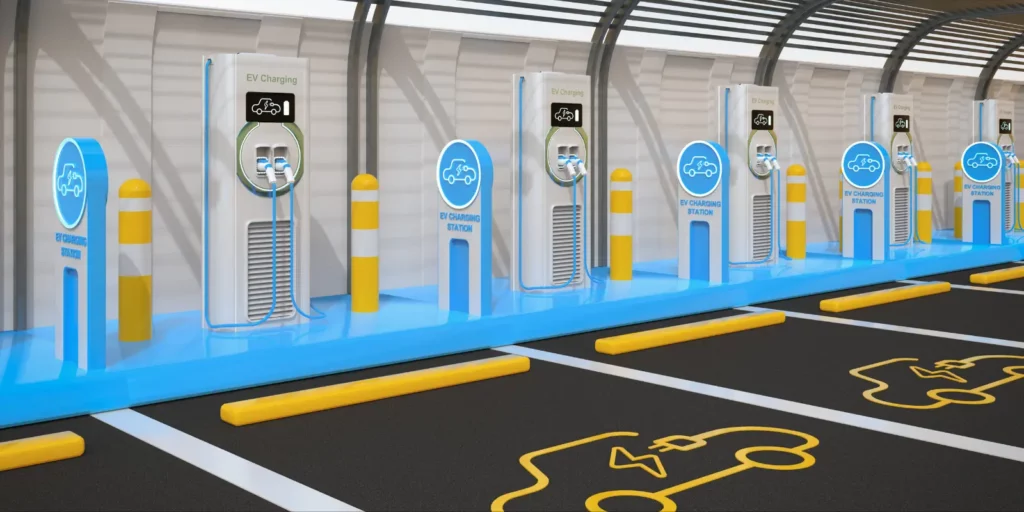
Conclusion
The white paper concludes by suggesting key actions to establish scale-up capability for battery cell manufacturing, equipment development for manufacturing of EV components, and the establishment of a distributed testing framework. It also recommends technology intervention in the value chain of EV components and suggests an overall framework for accelerating and amplifying the EV evolution in India.
